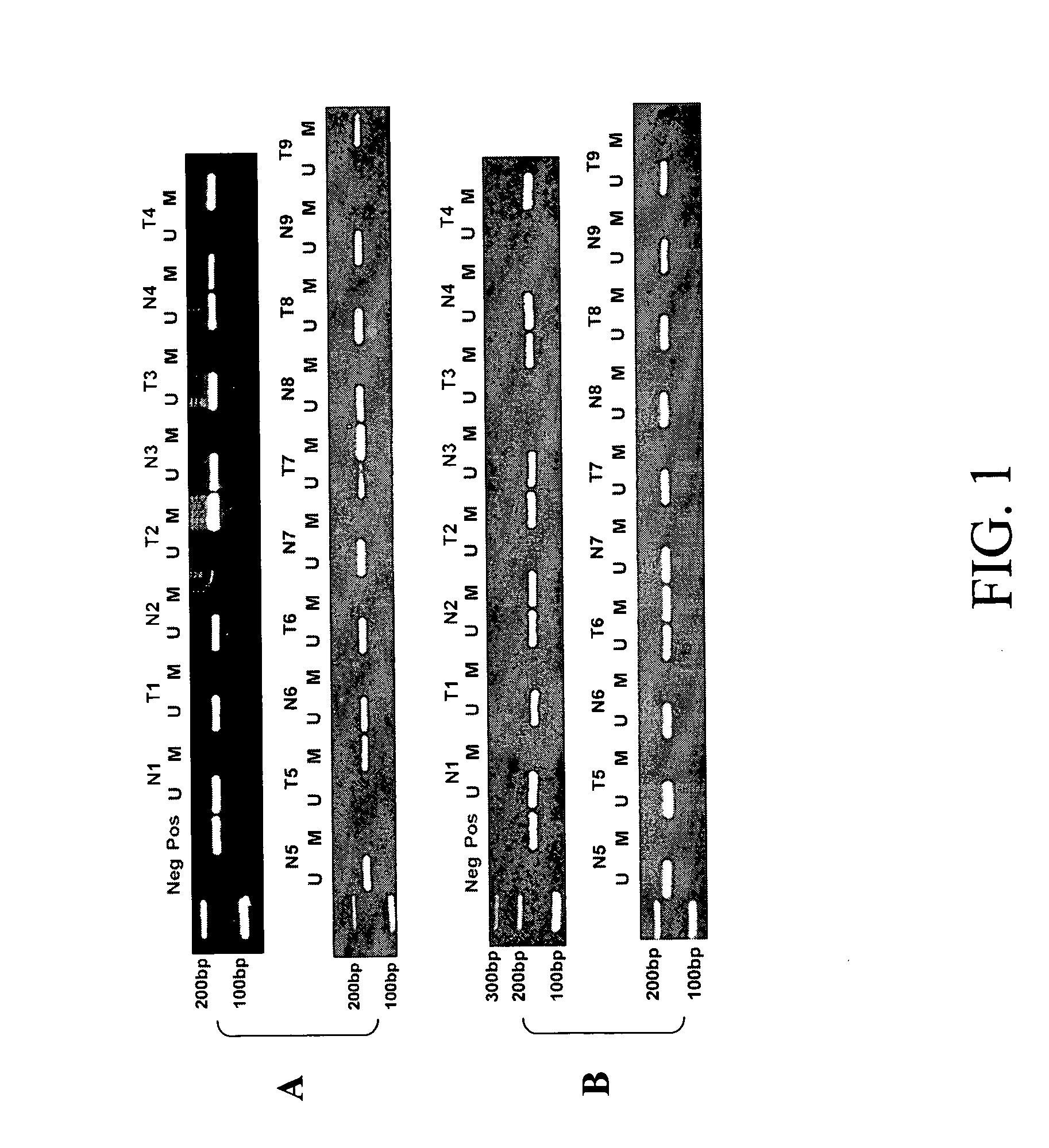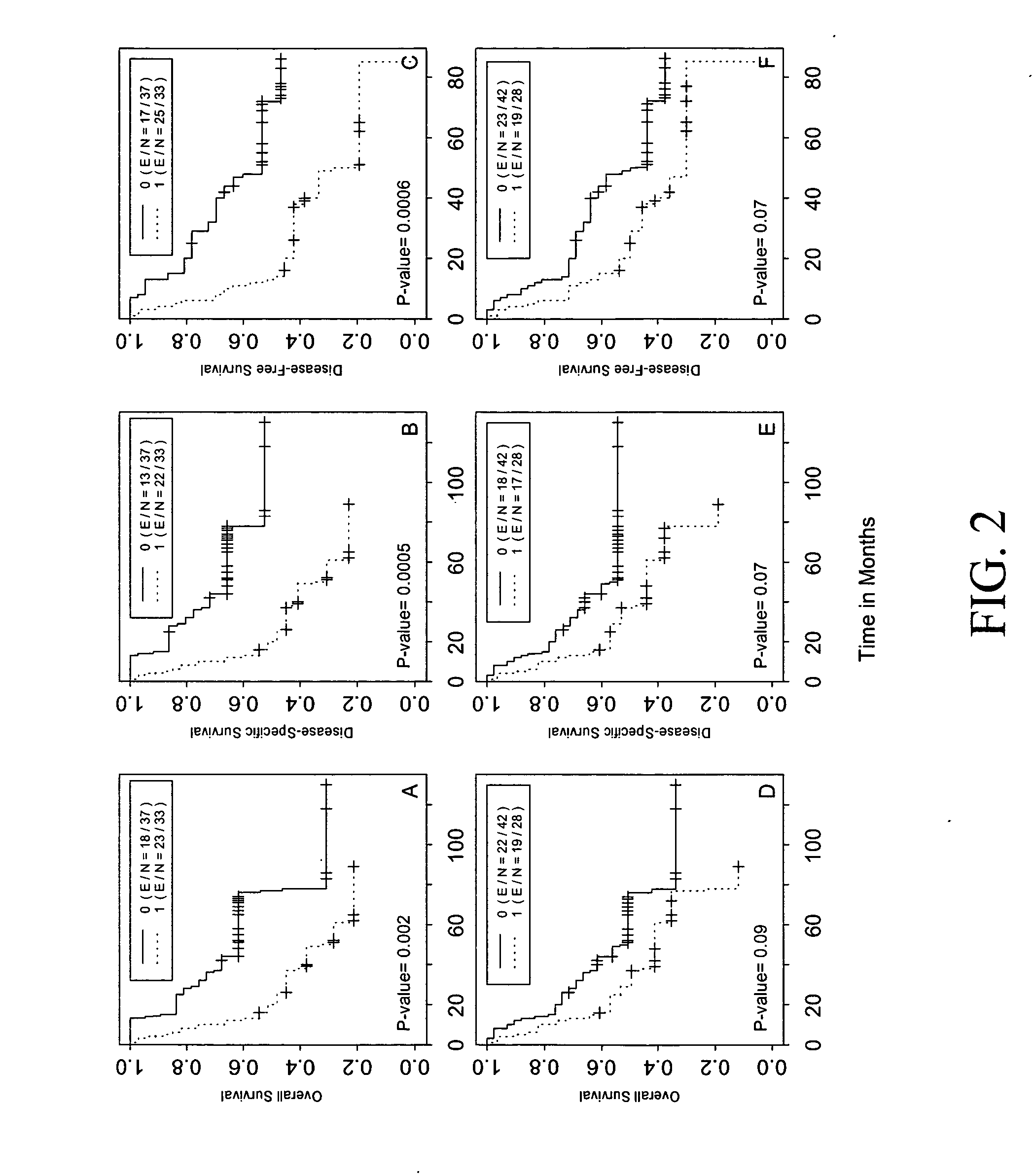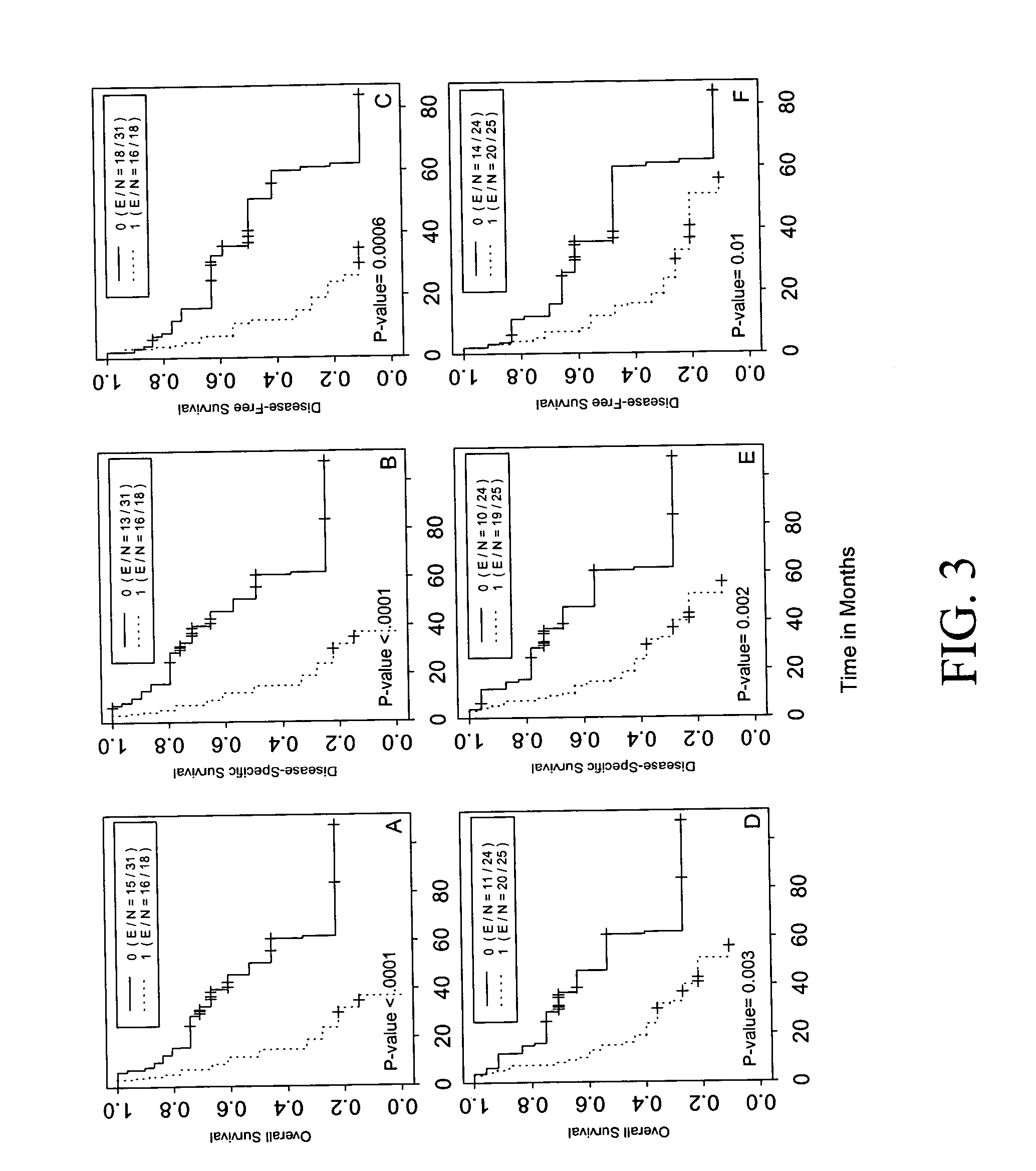Method of treating a cancer
a cancer and cancer technology, applied in the field of molecular biology, cancer biology and cancer therapy, can solve the problems of non-specific demethylating agents in cancer therapy, low efficiency, and inability to achieve partial demethylation, and achieve the effect of restoring expression
- Summary
- Abstract
- Description
- Claims
- Application Information
AI Technical Summary
Benefits of technology
Problems solved by technology
Method used
Image
Examples
example 1
Experimental Procedures
[0189] Study population. One hundred nineteen patients who were diagnosed with pathologic stage I-IIIA NSCLC and had undergone lobectomy or pneumonectomy for complete resection of their primary tumors at The University of Texas M. D. Anderson Cancer Center between 1994 and 2001 were included in the study. The selection of these patients was based on available fresh tumor tissues and corresponding normal lung tissues. The clinical information and follow-up data were based on chart review and on reports from the tumor registry service. Informed consent for the use of residual resected tissues for research was obtained from all the patients in the study. The study was reviewed and approved by the institution's Surveillance Committee. None of the patients with stages I or II disease received adjuvant chemotherapy or radiotherapy before or after surgery. Among 49 patients with stage IIIA disease, 5 received preoperative chemotherapy or chemo-radiotherapy, 20 recei...
example 2
Clinical Characterization of Patients
[0209] Clinical characteristics of all patients enrolled in the study are summarized in Table 2. Among the 119 patients, 47 (39%) were female and 72 (61%) were male. The mean age (±standard deviation) of the population was 64.3±10.1 years (range, 39-84 years). At the censor date of Nov. 14, 2003, the median follow-up period was 51 months (range, 16-130 months). Of the 70 patients with stage I or II disease, 29 (41%) were still alive, 35 (50%) died of lung cancer, and 6 (9%) died of unrelated causes. No significant difference in 5-year overall, disease-specific, and disease-free survival rates were observed by tumor stage, gender, smoking status, differentiation status, and histologic subtype in this patient group. Among the 49 patients with stage IIIA disease, 18 (37%) were still alive, 29 (59%) died of lung cancer, and 2 (4%) died of unrelated causes. In this group of patients, smokers had significantly poorer 5-year survival rates than the non...
example 3
Determining Methylation Status of Promoters
[0210] Using MSP, the methylation status of the p16INK4a and RASSF1A promoters in 119 primary tumors and the corresponding normal-appearing lungs was determined (FIG. 1). Promoter methylation was detected in 58 (49%) and 46 (39%) of the tumor tissue for the p16INK4a and RASSF1A promoters, respectively, compared with 13 (11%, including 4 samples whose corresponding tumors lacked methylation of the p16INK4a promoter), and 4 (3%) in the corresponding normal-appearing lung tissues (PINK4a and RASSF1A were detected in all the normal-appearing lung tissues, and in 60% of tumor tissues, most likely because of the presence of normal cells in the tumor samples. In patients with stage I or II NSCLC, tumors with methylation of the p16INK4a promoter had a higher frequency of RASSF1A promoter methylation than those without p16INK4a promoter methylation, 58% versus 24% (P=0.005), suggesting that RASSF1A promoter methylation tends to occur in tumors with...
PUM
| Property | Measurement | Unit |
|---|---|---|
| Digital information | aaaaa | aaaaa |
| Fraction | aaaaa | aaaaa |
| Fraction | aaaaa | aaaaa |
Abstract
Description
Claims
Application Information
 Login to View More
Login to View More - R&D
- Intellectual Property
- Life Sciences
- Materials
- Tech Scout
- Unparalleled Data Quality
- Higher Quality Content
- 60% Fewer Hallucinations
Browse by: Latest US Patents, China's latest patents, Technical Efficacy Thesaurus, Application Domain, Technology Topic, Popular Technical Reports.
© 2025 PatSnap. All rights reserved.Legal|Privacy policy|Modern Slavery Act Transparency Statement|Sitemap|About US| Contact US: help@patsnap.com



